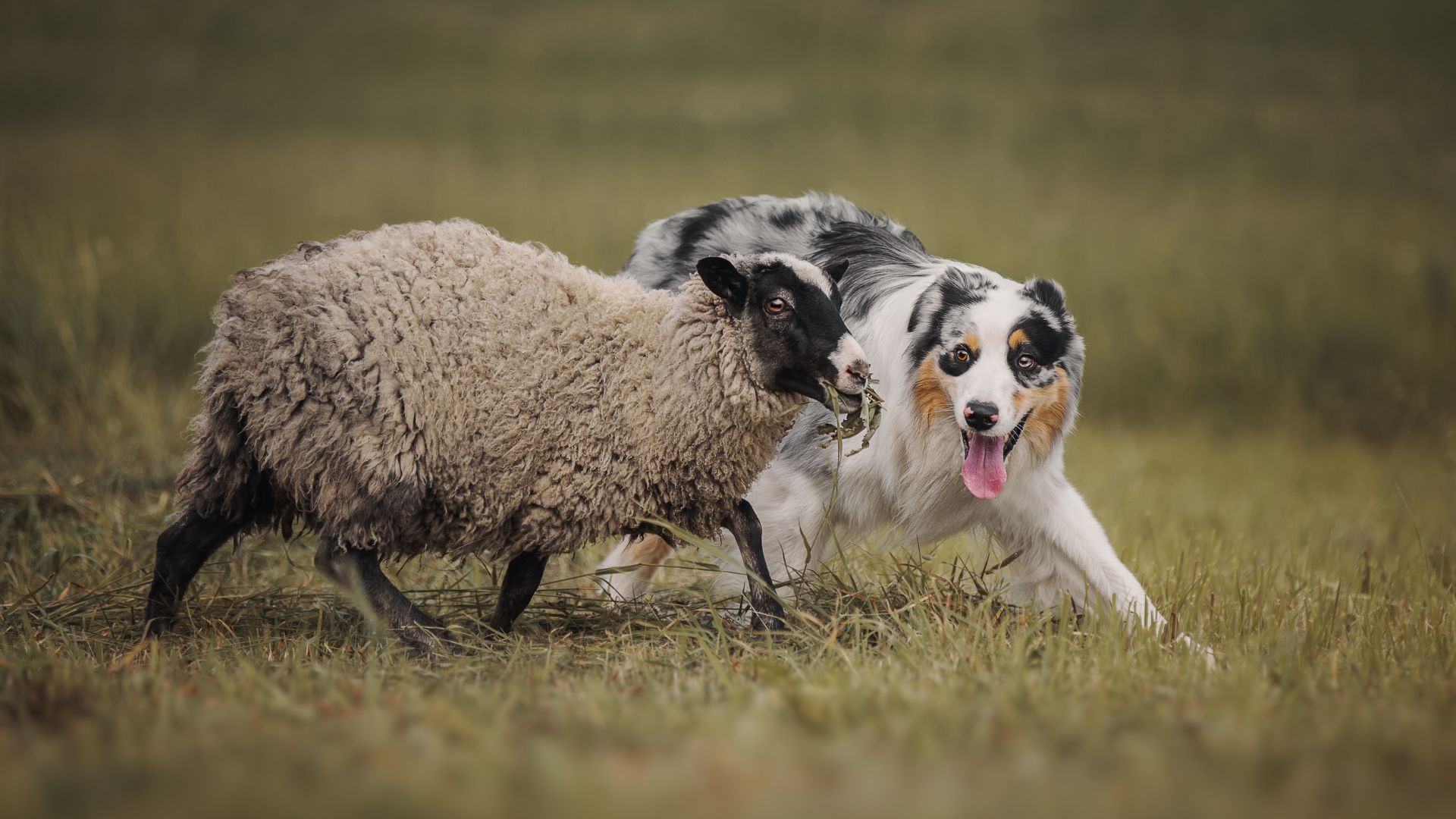If you love a dog that’s sharp, eager, and ready to learn, herding breeds are some of the best companions you can find. These herding dog breeds have been bred for generations to respond quickly to commands, work closely with humans, and think independently—all skills that make them incredibly trainable.
Whether you want a family dog who can pick up tricks fast or a loyal partner for agility courses and obedience training, herding dog breeds often shine in these roles. They thrive on mental stimulation and physical activity, so they’re happiest when they have a job to do, even if that job is just keeping your family entertained and engaged.
These herding dogs build strong bonds with their owners through training and teamwork. But remember, their keen intelligence means they also need consistent guidance and plenty of exercise to stay balanced and happy.
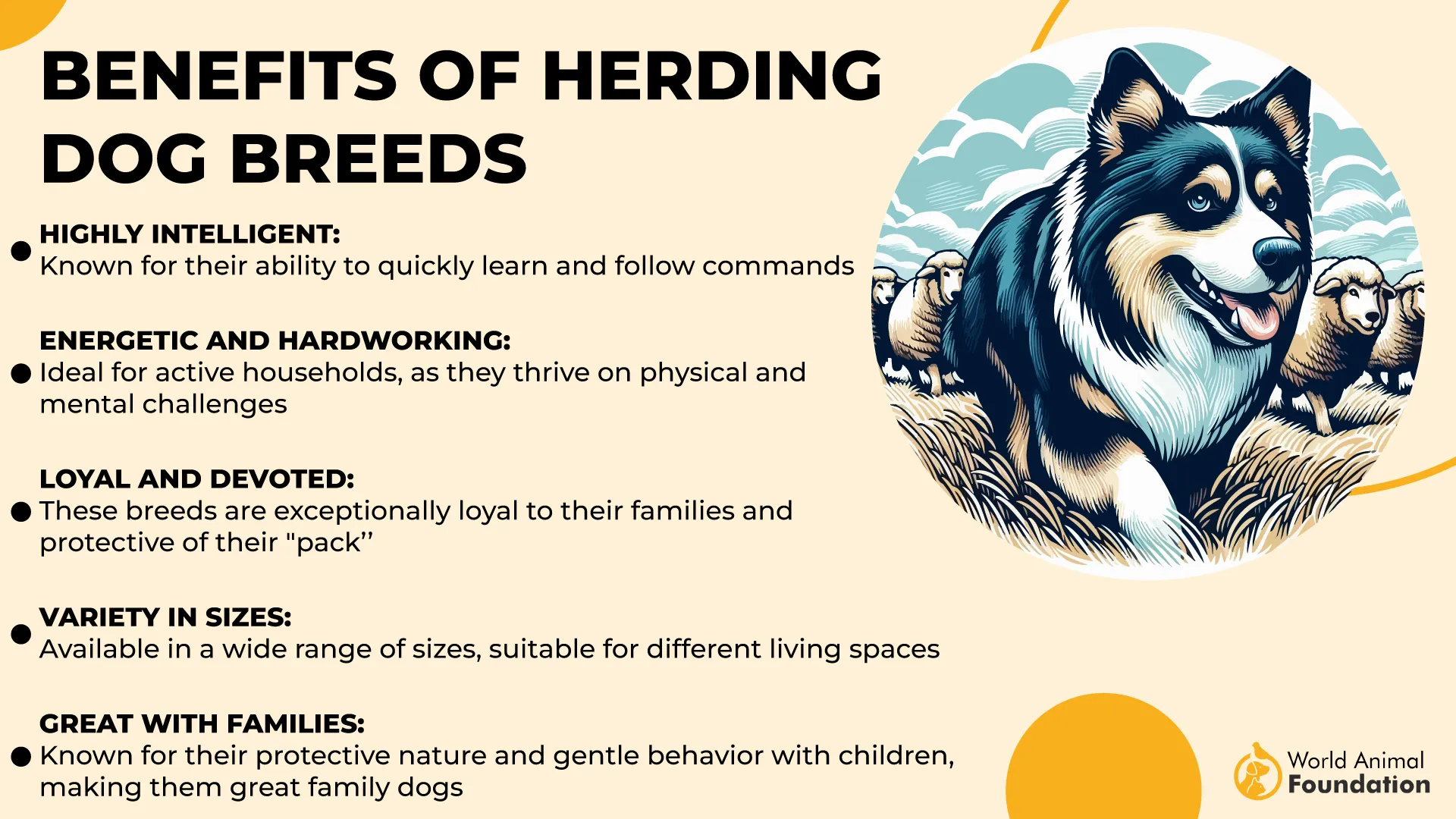
If you’re ready to invest time in training and want a dog who can learn and grow with your family, herding dog breeds offer unmatched devotion and smarts. Let’s meet these 7 most exceptional herding dog breeds.
Highly Trainable Herding Dog Breeds
1. Shetland Sheepdog
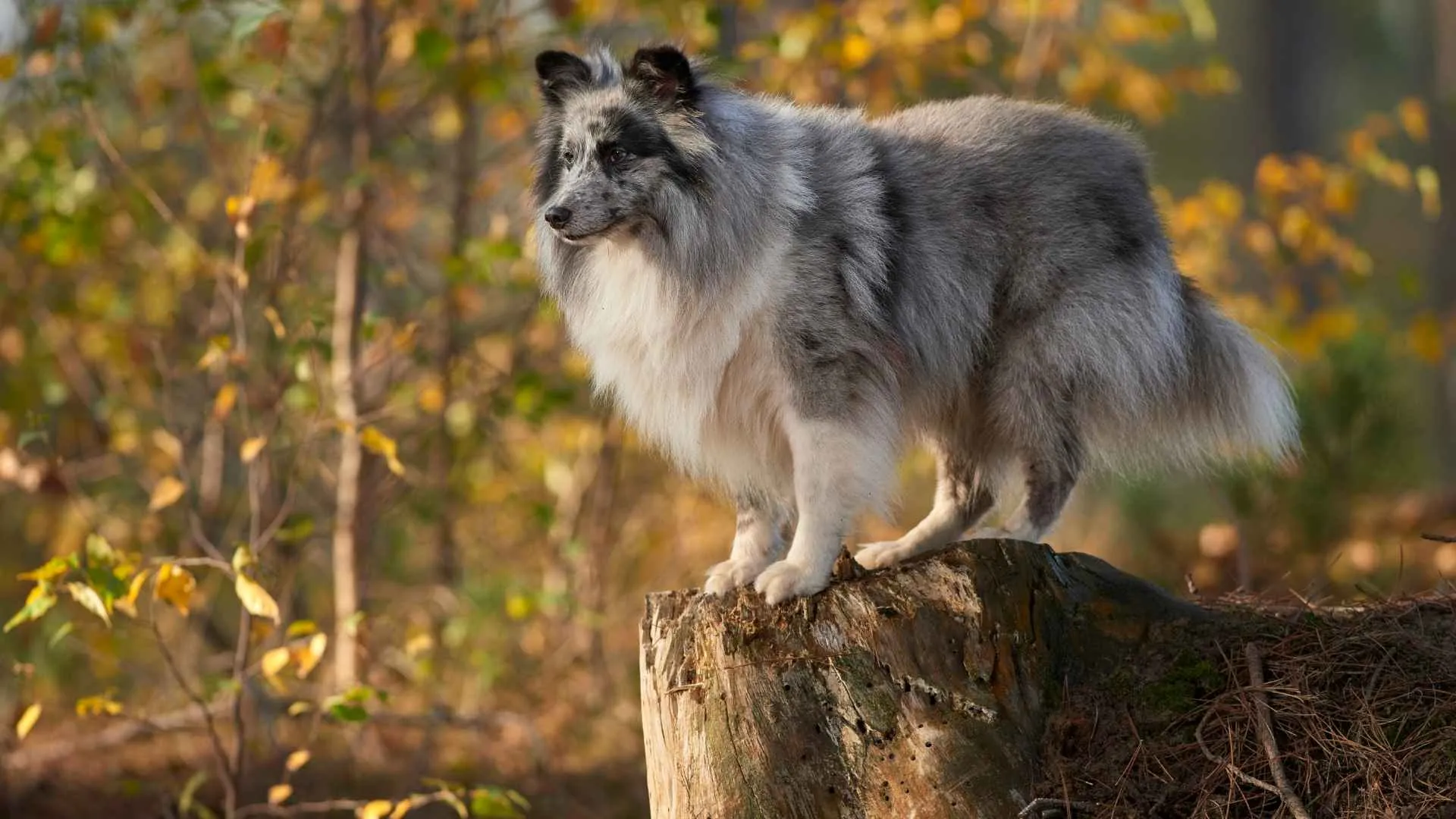
Ah, the Shetland Sheepdog, affectionately called Shelties—think of them as the overachiever in your friend group who bakes cookies and volunteers and still aces every test. According to the American Kennel Club (AKC), Shelties are not just highly intelligent—these herding dogs are world-class competitors in obedience, agility, and herding trials. In short: if there’s a doggy Olympics, the Sheltie’s taking home gold.
The Shetland Sheepdog is bright, eager, and very in tune with your household vibes. If you’re having a bad day, your Sheltie will probably be the first to know—possibly even before you do. They’re sweet, loyal, and sensitive little fluffballs who love their people hard… but they’re not the biggest fans of strangers. (Which makes them excellent watchdogs—yes, even if they’re under 30 pounds.)
But don’t be fooled by their cute, collie-esque good looks. These are working dogs through and through. If you don’t give them something to do, they will find something… and you may not like their choice.
They do bark, a lot—consider it their preferred language. And grooming? Let’s just say that glorious double coat doesn’t maintain itself. Regular brushing is a must if you don’t want tumbleweeds of fur rolling around your home.
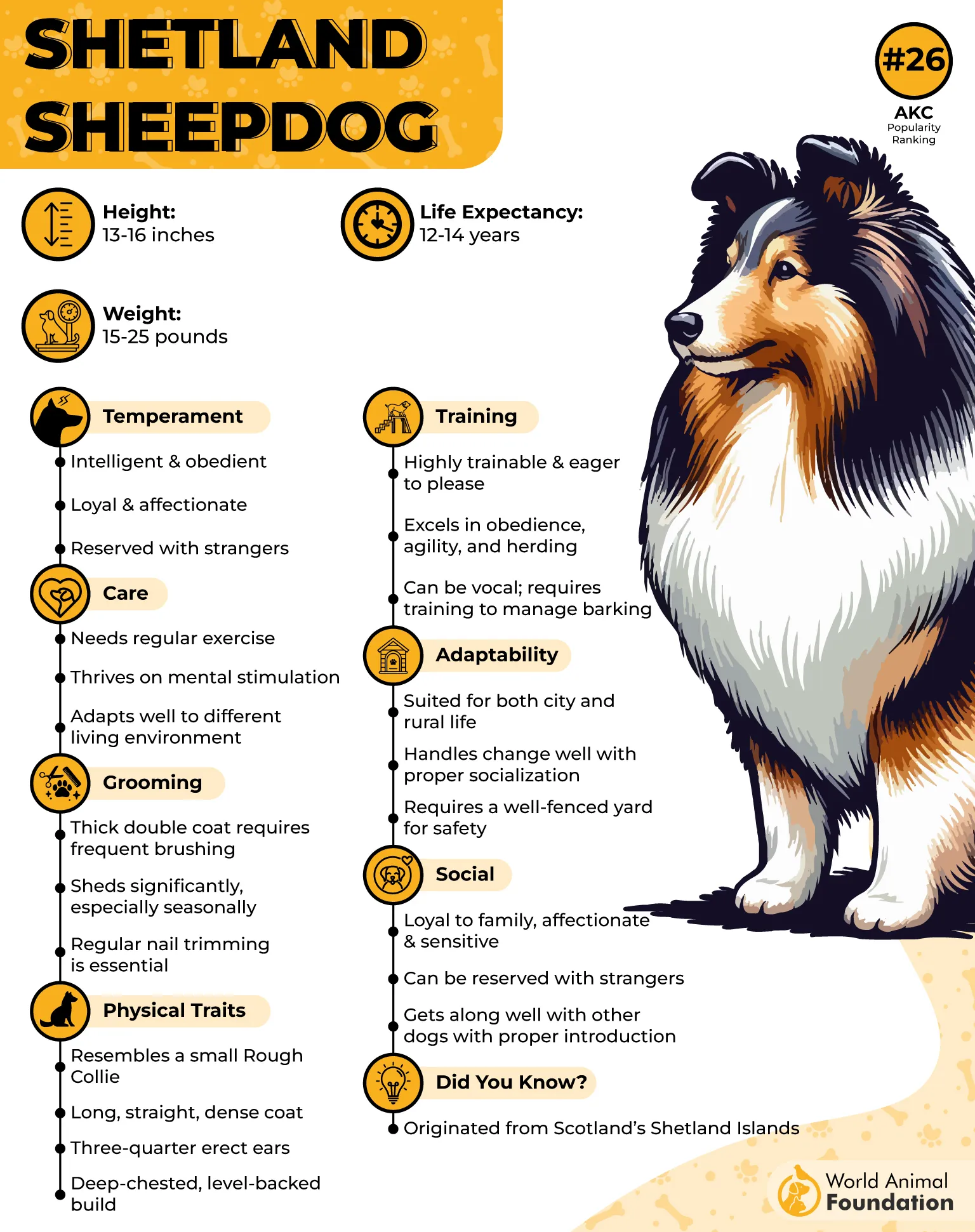
But overall, they’re generally a healthy breed, with a lifespan of 12–14 years, so they’ll stick around to herd your heart for a long time. Oh, and if something moves—squirrel, shadow, your toddler—don’t be surprised if your Sheltie’s on it like a sheepdog on a mission. Leashes and fences aren’t just recommended; they’re required.
Pro tip: Their compact size makes them apartment-friendly… if you’re committed to keeping their minds and legs busy. A bored Sheltie is b furry tornado of sass and squeaky toys.
2. Border Collie
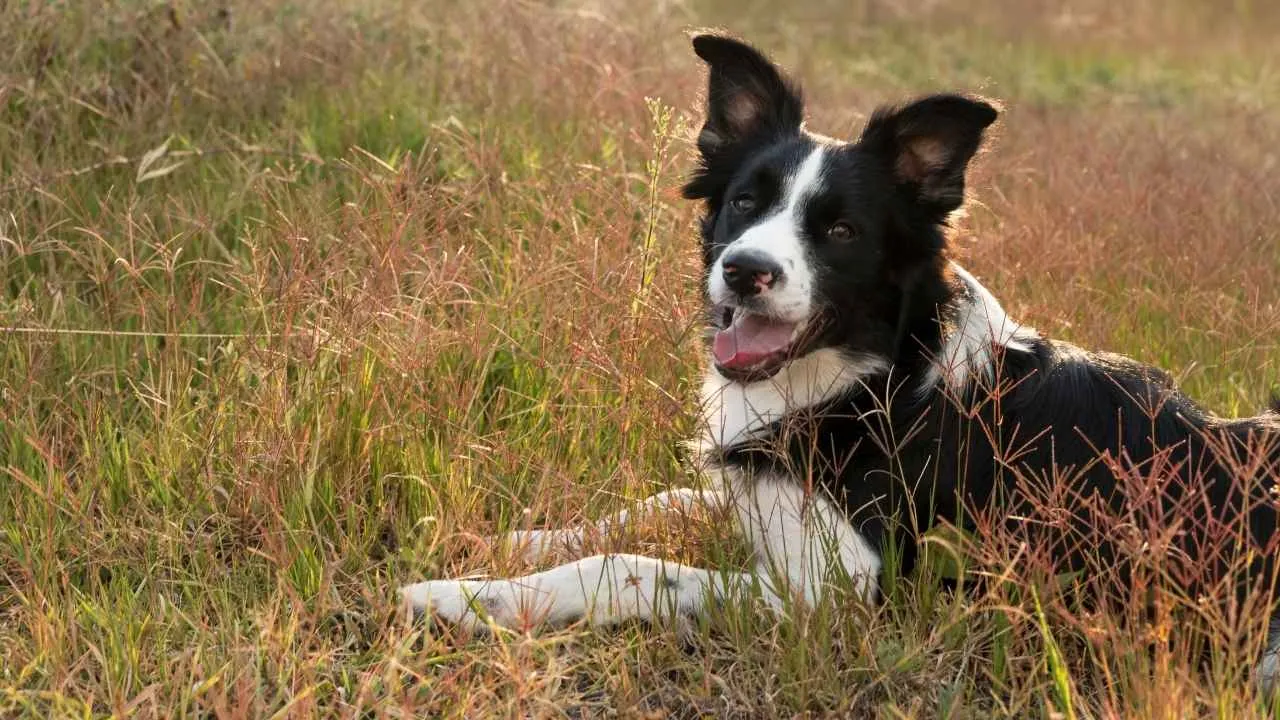
Let’s put it this way—Border Collies are so smart, they might figure out how to file your taxes if given a laptop and some peanut butter treats. Originally bred to herd livestock (especially sheep) across rough Scottish hillsides, these herding dogs are known for their laser focus, stamina, and ability to work smarter and harder.
PetPlan notes that Border Collies are incredibly responsive and pick up training quickly, likely faster than your Wi-Fi connects on a good day. And the AKC backs it up: these dogs are obedience rockstars.
Their genius-level brains crave mental stimulation. Give them a puzzle toy, and they’ll solve it. Give them agility training, and they’ll dominate. Give them a boring day with no exercise or stimulation… and, well, they might redecorate your living room using whatever’s chewable.
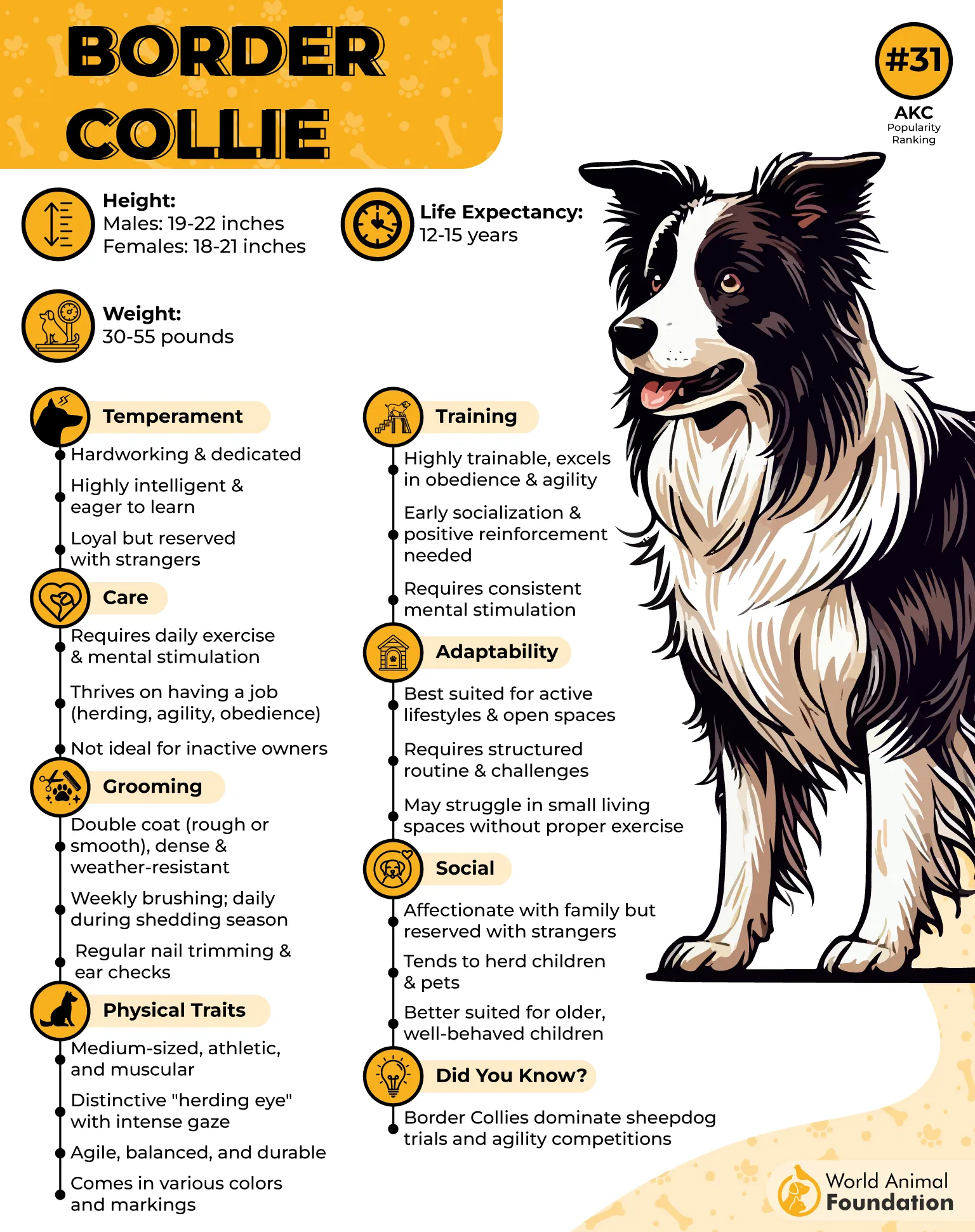
One thing that sets Borders apart is their responsiveness to subtle cues—a whisper, a gesture, even a raised eyebrow can be enough to send them into action. You’ll feel like you’re communicating telepathically, but really, it’s just a Border Collie doing Border Collie things.
They’re also loyal to the core and extremely affectionate with their families. But remember, that herding instinct runs deep—don’t be surprised if your Border tries to herd your kids, other pets, or even your visiting relatives. A little early socialization goes a long way in teaching them when it’s okay to chill.
And let’s not forget the hair—they have a dense double coat, and yes, that means shedding. Regular brushing is the key to keeping that glorious mane (and your couch) in check.
Fun fact: These herding dog breeds thrive in agility sports, herding trials, and even canine dance competitions (yes, that’s a real thing, and yes, they’re amazing at it).
3. Australian Cattle Dog
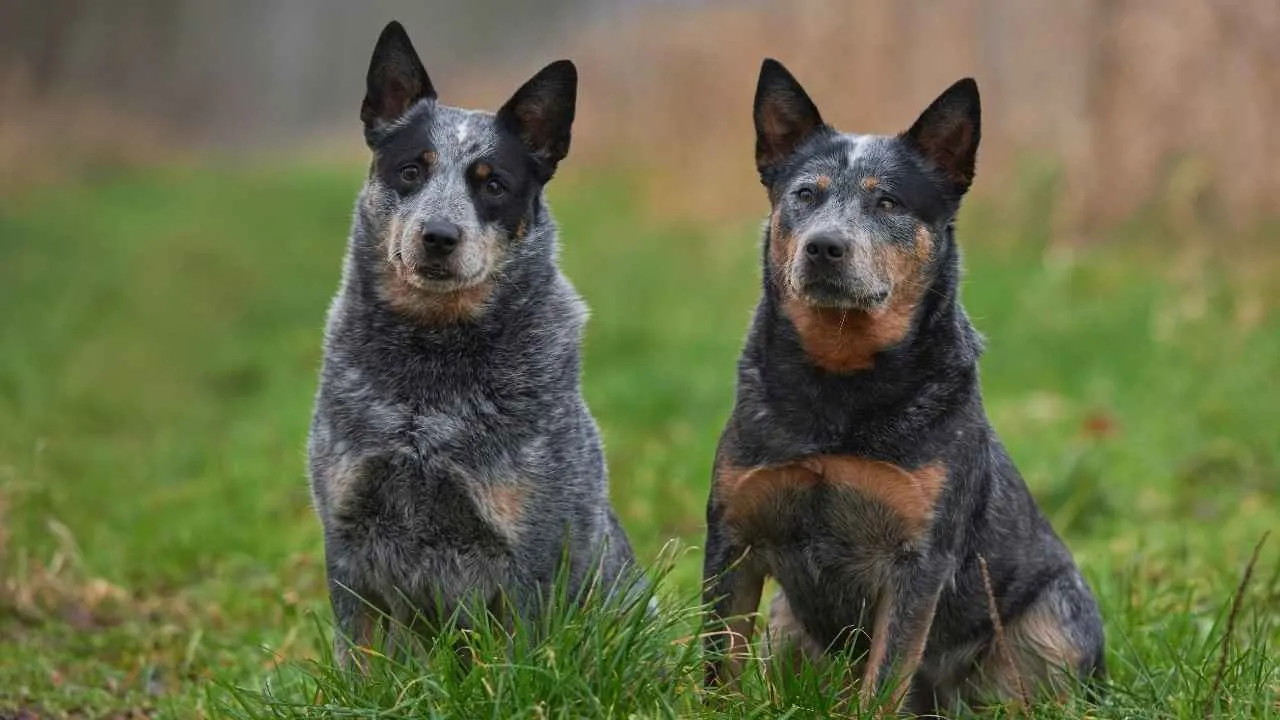
Also known as the “Blue Heeler” or “Red Heeler” (depending on their coat color), the Australian Cattle Dog is like the muscular bunny of the herding world. These medium-sized dynamos weigh in at 35–50 pounds and stand around 17–20 inches tall, but don’t let their size fool you—they pack a serious punch of energy and smarts.
Australian Cattle Dogs were bred to herd cattle over rough terrain, so running, hiking, and dog sports are their idea of a good time. And mental workouts? Essentially.
If you don’t keep their brains busy, they’ll invent their own “fun,” which usually means chasing your shoes or trying to herd the family cat (or maybe even you).
Fiercely loyal and often bonded deeply to one special human, these dogs aren’t fans of being left alone. They’re protectors by nature, but aren’t aggressive—they just want to keep their family and turf safe.
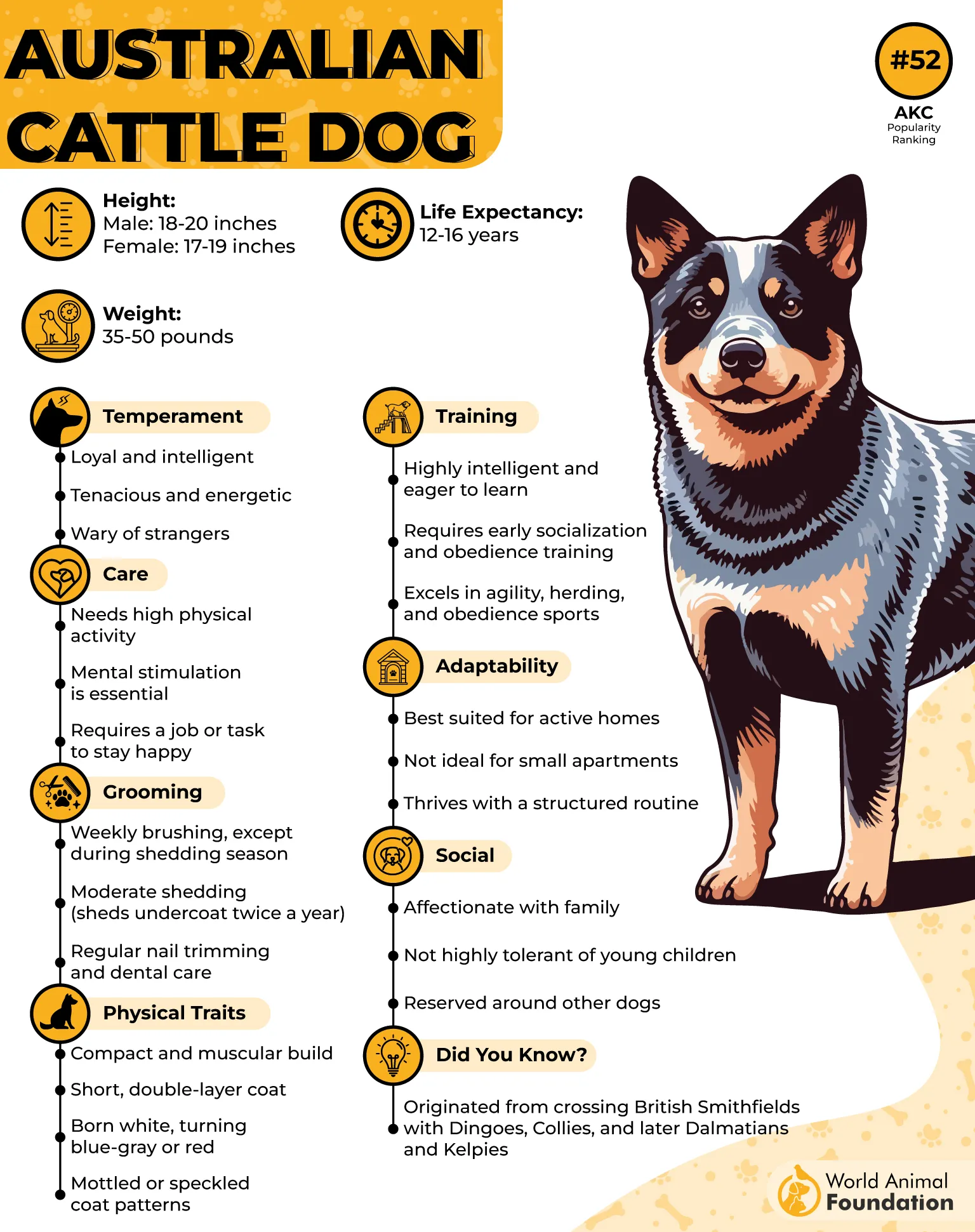
Quick heads-up: They aren’t the couch potato type. If you’re looking for a Netflix buddy who’s happy to binge all day, this isn’t your breed. Also, they might try herding your kids (or adults), so supervision is a must unless you want to see some unexpected “cowboy” moves at the playground.
In summary? The Australian Cattle Dog is a high-energy, highly trainable protector with a heart of gold—just be ready to keep up!
4. Australian Shepherd
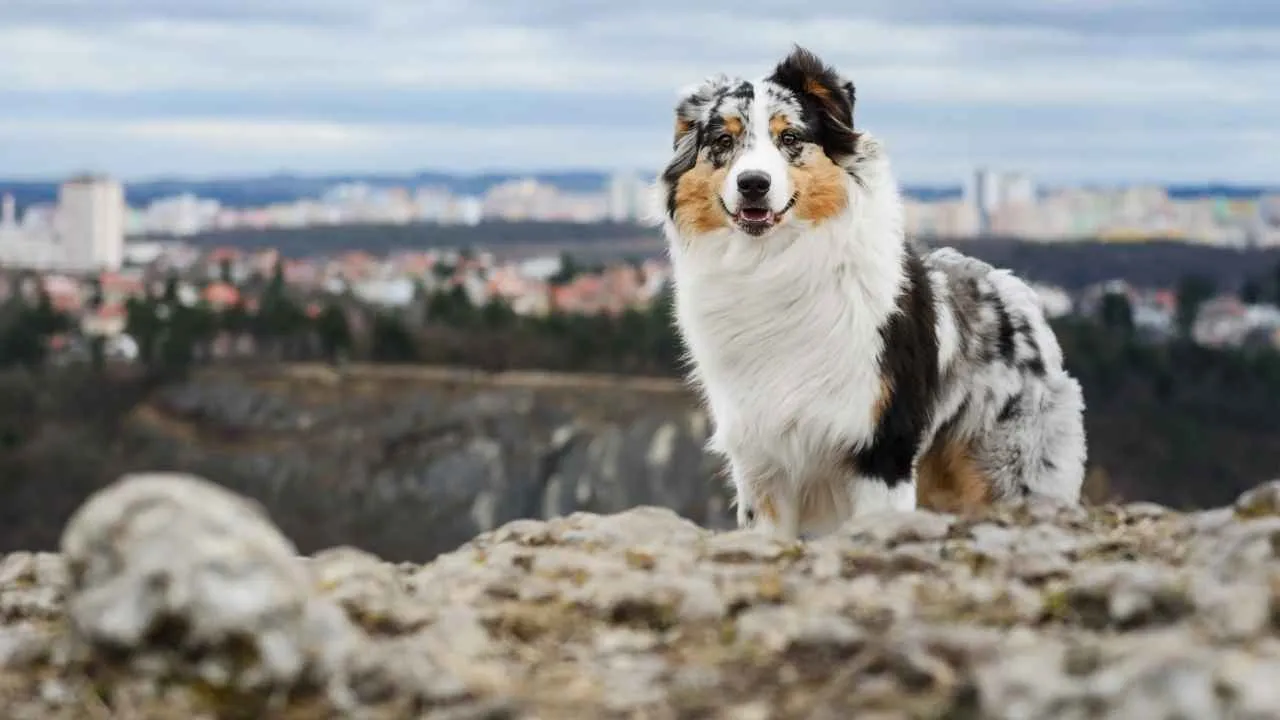
If intelligence and agility had a poster child, the Australian Shepherd would be front and center, wearing a medal and juggling frisbees. Ranked among the smartest dog breeds, Aussies thrive on obedience, agility, and solving doggy puzzles like it’s no big deal.
But here’s the twist—intelligence is more than just being trainable. These medium-sized pups have a sixth sense for their owners’ emotions, making them incredibly empathetic and loyal companions. They’re little emotional support ninjas.
Aussies love a good game of fetch or frisbee, thanks to their herding background and strong prey drive. But beware: without enough exercise and mental stimulation, they can turn your backyard into a digging zone or chew toy paradise.
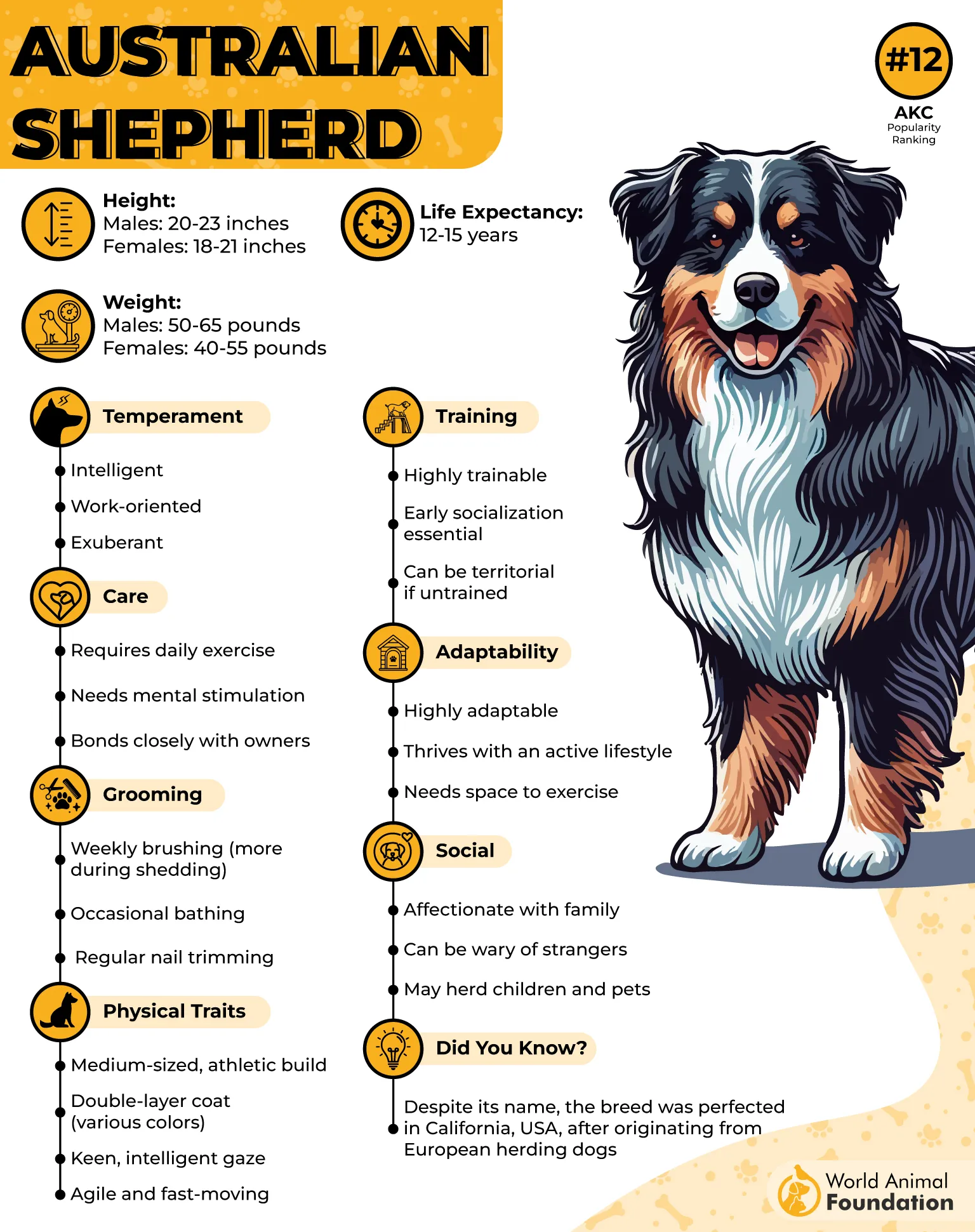
With their strong attachment to their humans, they’re more than happy to be your shadow 24/7. (No personal space? They don’t mind!).
PetMD says that this closeness sometimes leads to separation anxiety—so training and developing healthy independence is important (your Aussie needs boundaries, too!).
If you want a dog that’s a blend of brilliant athlete, emotional therapist, and loyal sidekick, the Aussie might just steal your heart (and maybe your socks).
5. Pembroke Welsh Corgi
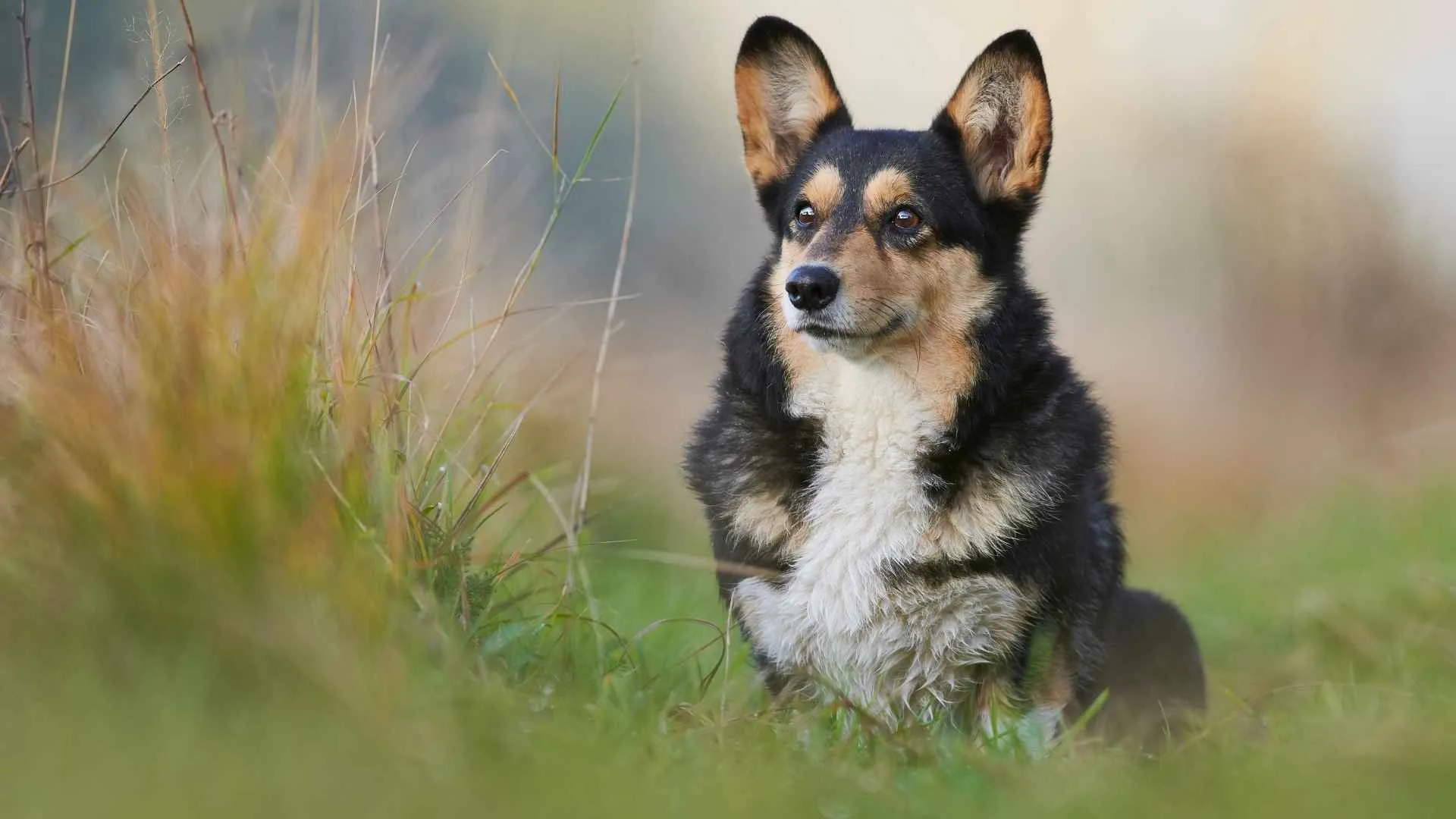
Small in stature but HUGE in personality, the Pembroke Welsh Corgi is the herding world’s beloved little powerhouse. As one of the oldest herding breeds, these short-legged charmers were built for nipping at cattle heels—hence the forever-alert, hardworking nature.
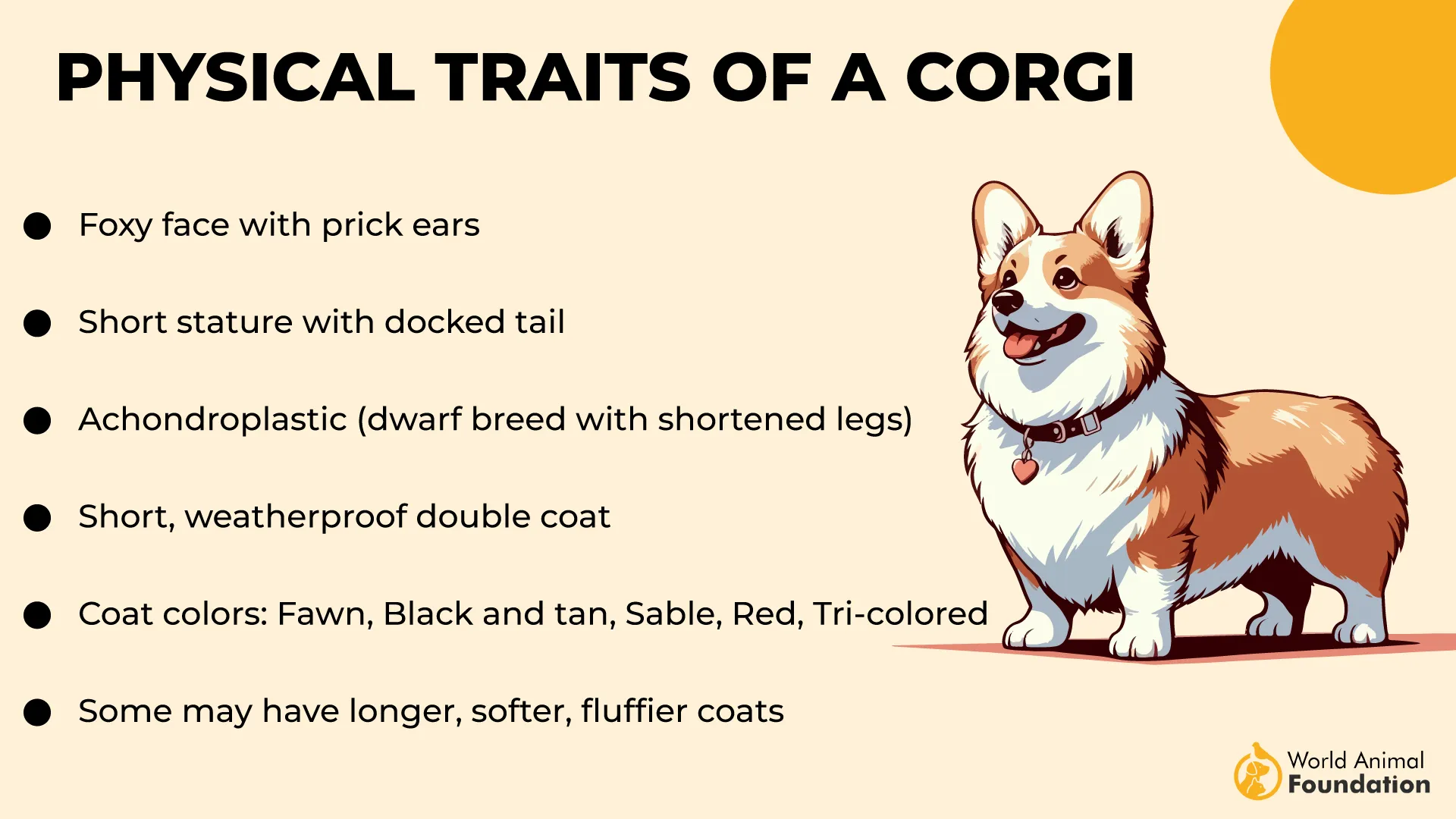
Corgis have a distinct look: erect ears, a fox-like face, expressive eyes, and that signature short tail that’s their trademark. Their weather-resistant double coat keeps them cozy whether they’re out herding or curled up on your lap (yes, they manage to do both).
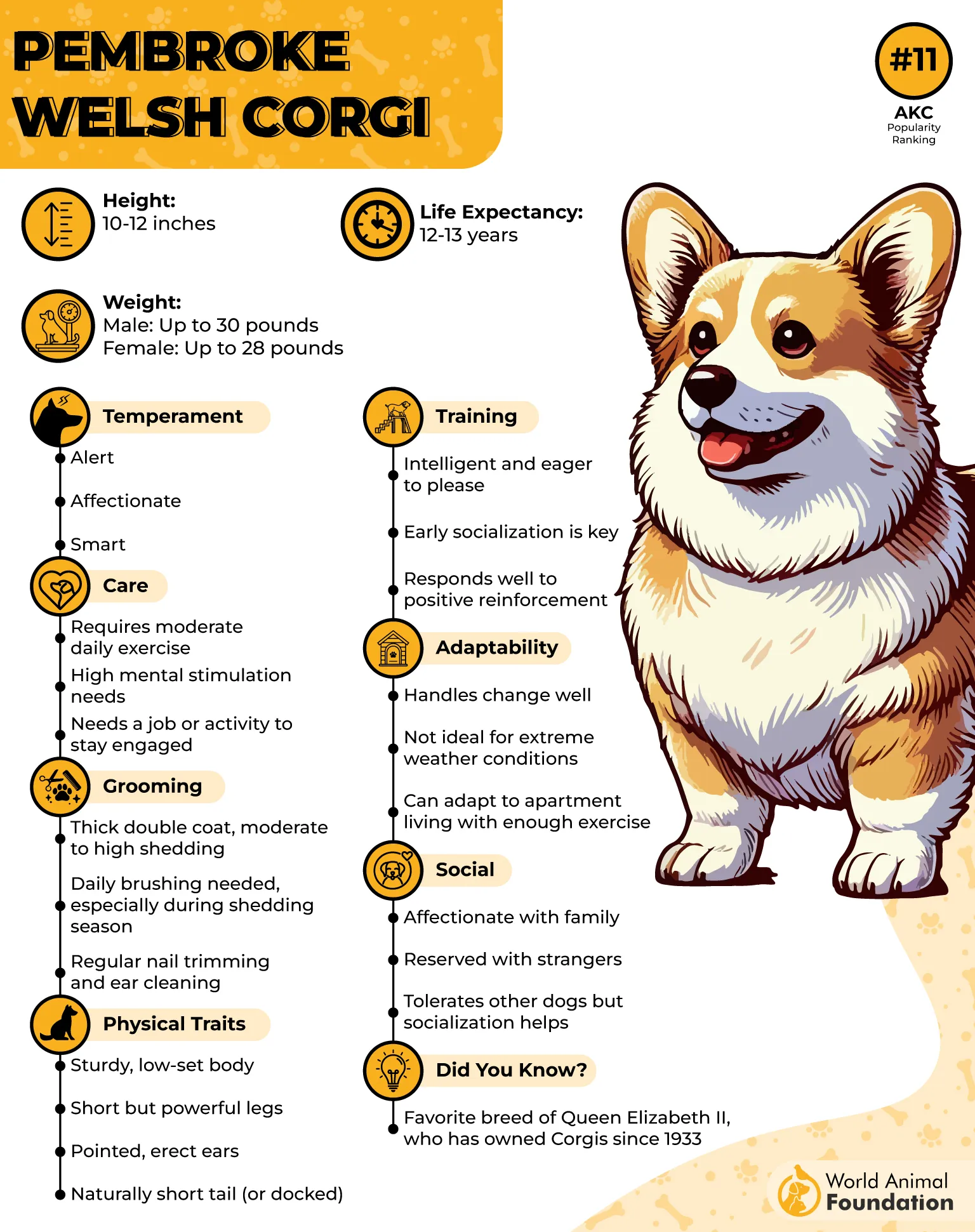
Smart as a whip, these high-energy dogs have a work ethic that simply won’t quit, always sporting a smile that says, “Let’s do this!” Whether it’s training, games, or herding tasks, these pups dive in with enthusiasm.
They form strong bonds with their families, love being involved in daily activities, and make excellent watchdogs—expect them to alert you to anything unusual, including the mailman’s suspicious presence or that random leaf blowing by the window.
Corgis need regular exercise and mental challenges to keep their tails wagging and minds sharp. With proper training and socialization, they have an affectionate nature and are delightful companions.
6. German Shepherd
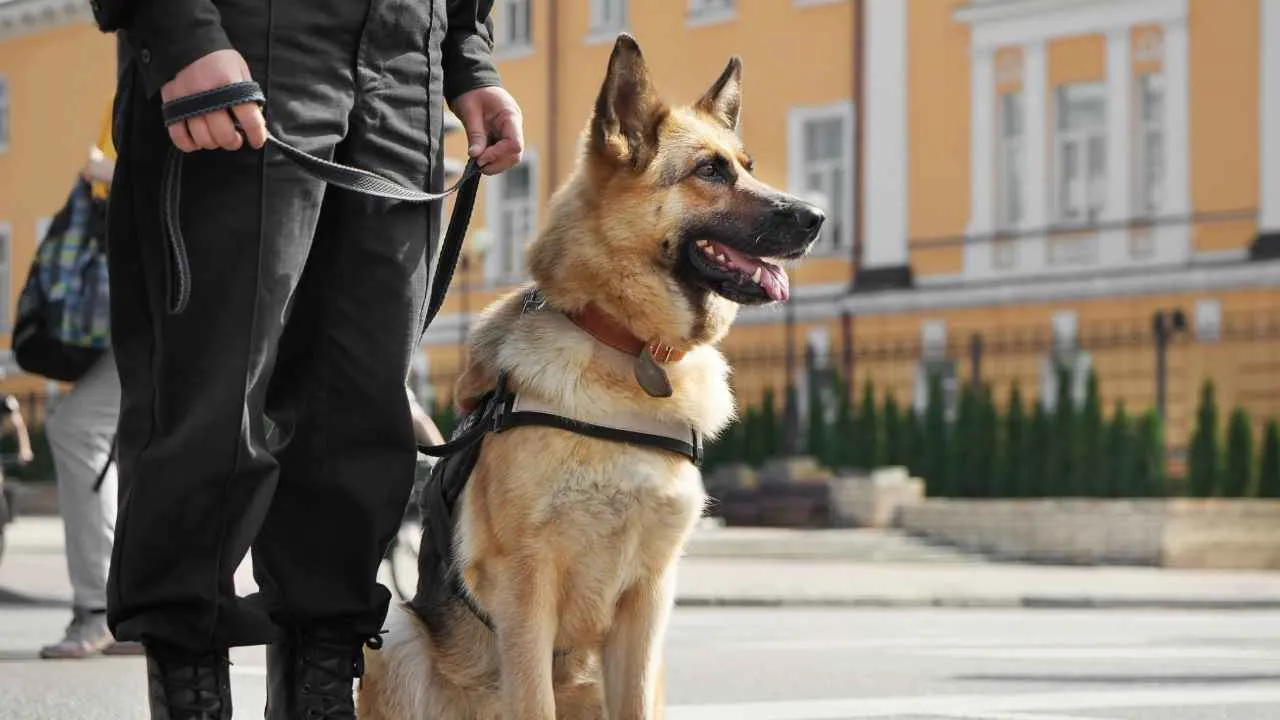
German Shepherds are the all-star students of the dog world—always eager to learn, loyal to a fault, and incredibly active in both body and mind. It’s no surprise they rank among the most popular breeds in the U.S. (basically, they’re the canine version of a superhero).
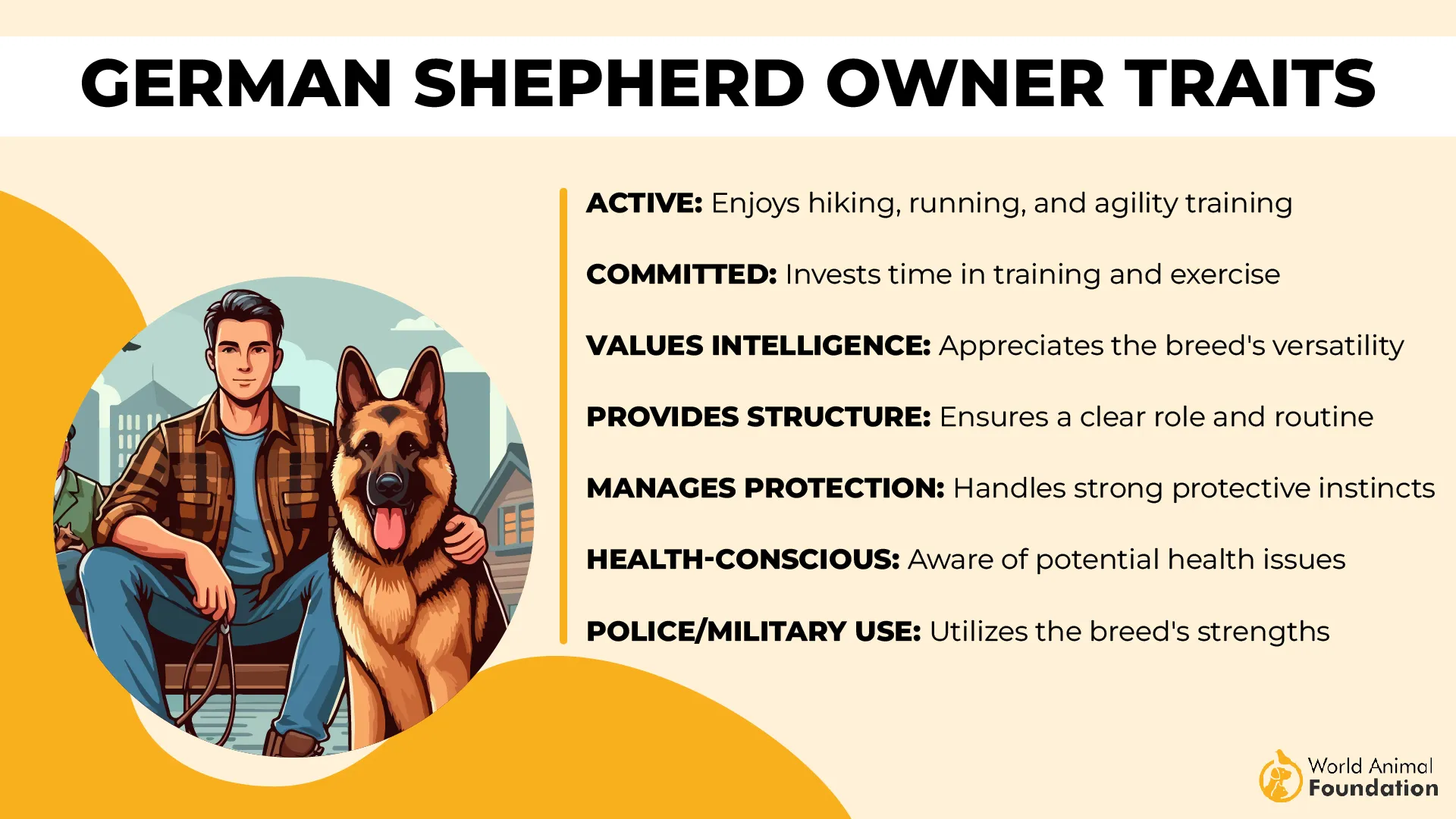
These big-hearted with pointy-eared pups weigh between 50 and 90 pounds and stand tall at 22 to 26 inches, making them impressive but gentle giants. They’re famously used in military and police work—patrolling, bomb sniffing, search and rescue—you name it. If there’s a doggy job that requires smarts and bravery, GSDs are the go-to pros.
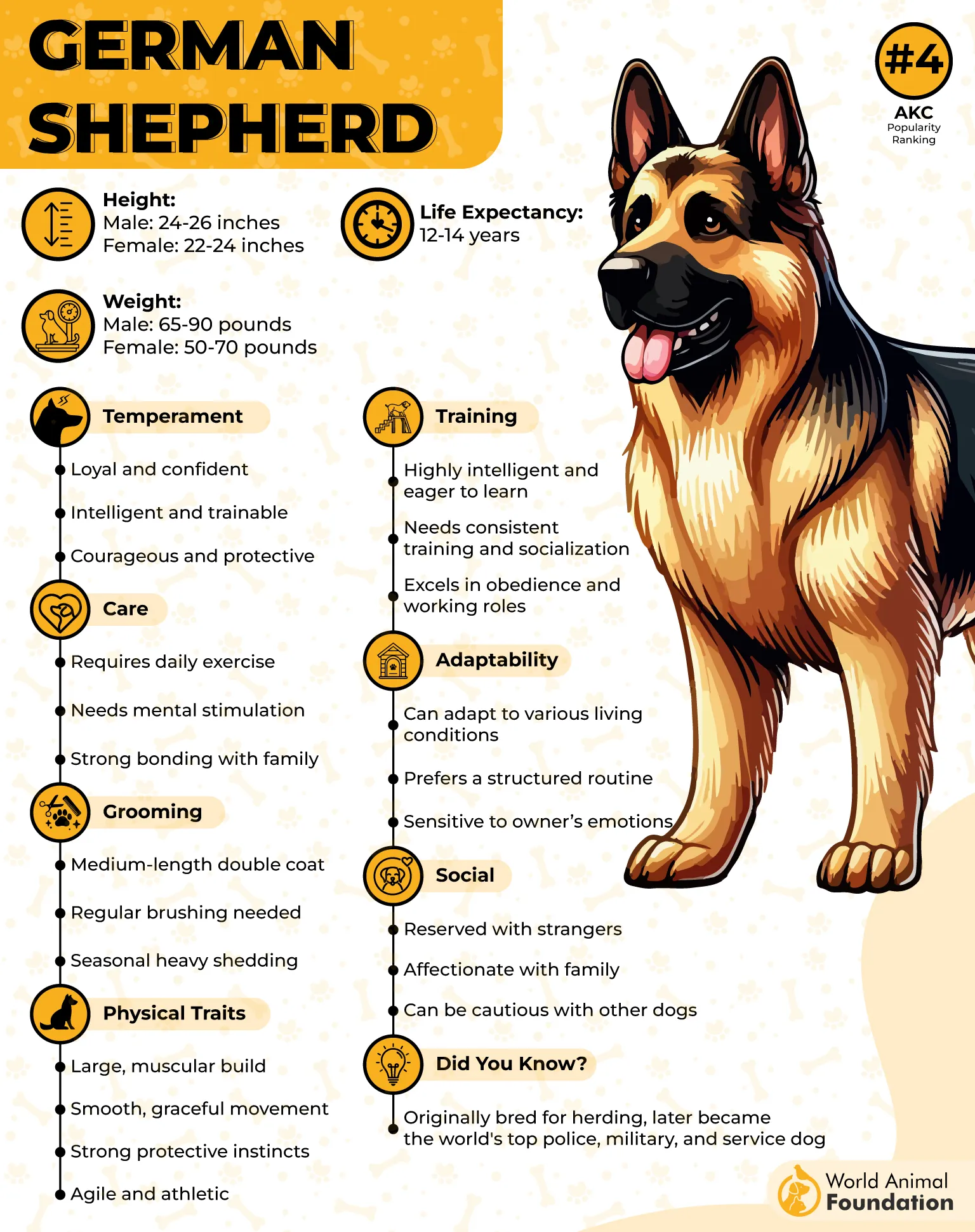
They tend to be gentle with kids and other animals, but don’t mistake their friendliness for weakness. Their protective instincts mean they might give strangers the side-eye at first—think of it as their way of keeping you safe. And yes, they’re not naturally aggressive, just cautious and vigilant.
Heads up: They have thick coats that shed pretty much year-round, so if you’re allergic or not into constant vacuuming, maybe think twice. They also hate being left alone for long—they can get separation anxiety, so be ready to keep them company.
PetPlan notes that these pups need at least two hours of exercise a day, plus mental challenges to stay happy. So if you’re a runner, hiker, or just someone who loves an active lifestyle, you’ll have found your perfect workout buddy.
7. Belgian Malinois
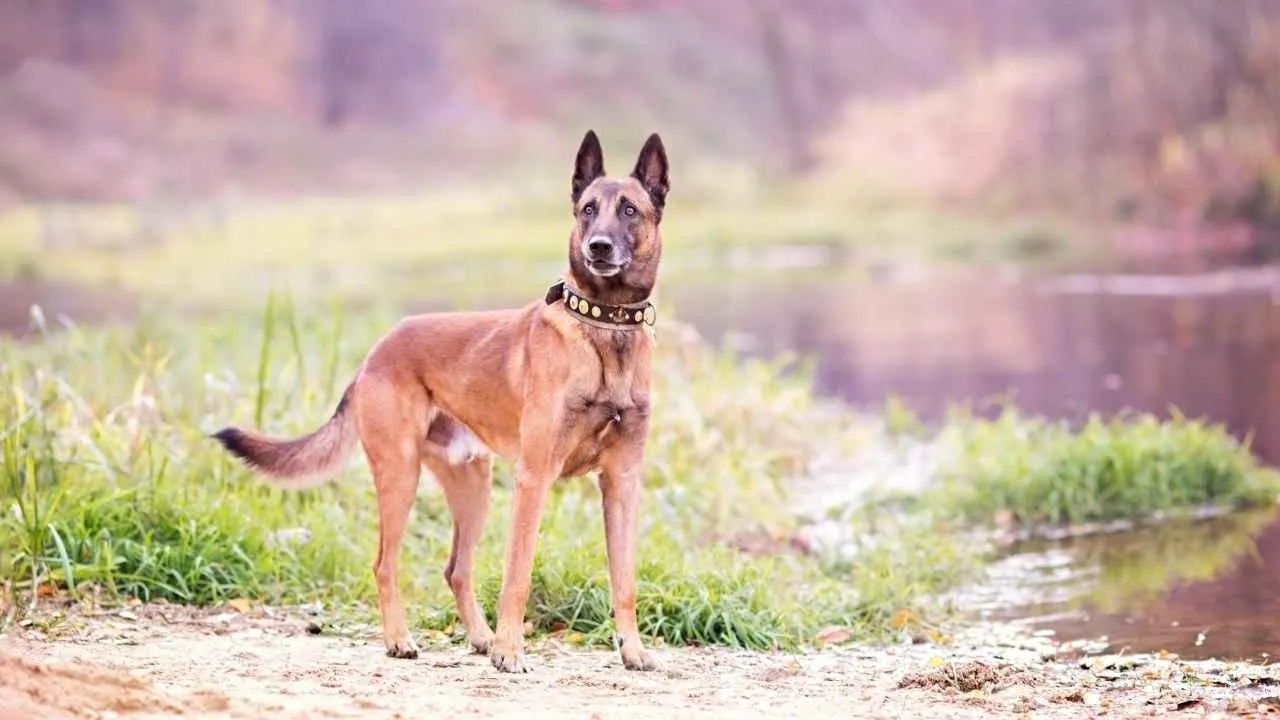
Meet the Belgian Malinois: the sleek, agile, and incredibly smart cousin of the German Shepherd. These dogs are the ultimate hard workers, bred to obey, protect, and form strong bonds with their humans. If loyalty had a shape, it would probably look like a Belgian Malinois.
Males stand about 24–26 inches tall and can weigh up to 80 pounds, while females are slightly smaller at 22–24 inches and up to 60 pounds. Built solid and sturdy, they’re designed for action—think of them as the athlete of the herding world.
These pups crave physical and mental stimulation like you crave your morning coffee. Runs, hikes, biking—you name it, they’re in. A backyard sprint just won’t cut it; these dogs need real adventures alongside their favorite humans.
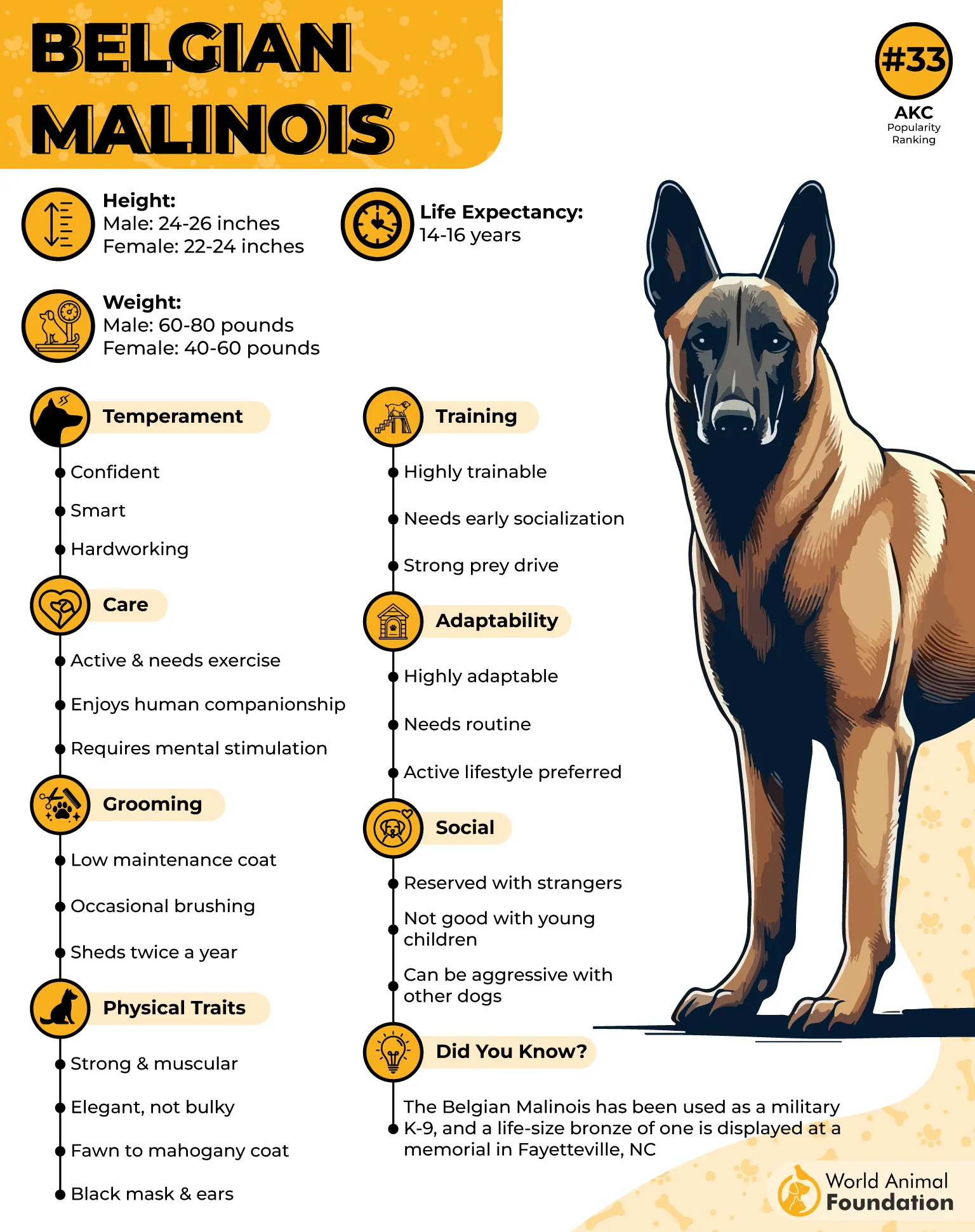
Agile and sharp, Belgian Malinois have excellent tracking and herding skills. Plus, as WebMD points out, they have impressive protection instincts, making them a top choice for keeping you safe while you explore the outdoors.
But a fair warning: if they don’t get enough socialization as puppies, these sensitive pups can become aggressive or fearful. They mature slowly and need lots of positive interactions with kids and other dogs to grow into well-rounded adults.
Their short, waterproof coat is easy to maintain, but expect two major shedding seasons a year. Minimal grooming? Check. Loyal, smart, athletic protector? Double check.
Conclusion
Highly trainable herding dog breeds are known for their sharp instincts, quick thinking, and energetic personality, making them ideal for active families and active owners. These intelligent dogs were originally bred to herd sheep, guard livestock, and protect livestock, often thriving as farm dogs or guard dogs. Breeds such as the Border Collie, Rough Collie, Bearded Collie, Canaan Dogs, Pembroke Welsh Corgis, Miniature Schnauzer, Bernese Mountain Dog, Golden Retriever, Labrador Retriever, and Doberman Pinscher are standout examples.
Many of these breeds were bred specifically to work in the herding group, requiring both their minds and bodies to stay engaged. Without enough physical stimulation and proper training, they may develop destructive behaviors. However, their playful nature, eager-to-please attitude, and loyalty to family members make them not just excellent working dogs, but also loving pets.
These dogs respond best to consistent training, gentle guidance, and positive reinforcement. With advanced training, they excel in agility competitions and often serve as guide dogs or competitors in various dog sports. To keep them performing at their best, a balanced diet and regular exercise are essential. Whether it’s helping herd livestock, competing in agility, or simply being loyal companions, these dogs thrive with love, attention, and the opportunity to shine.


